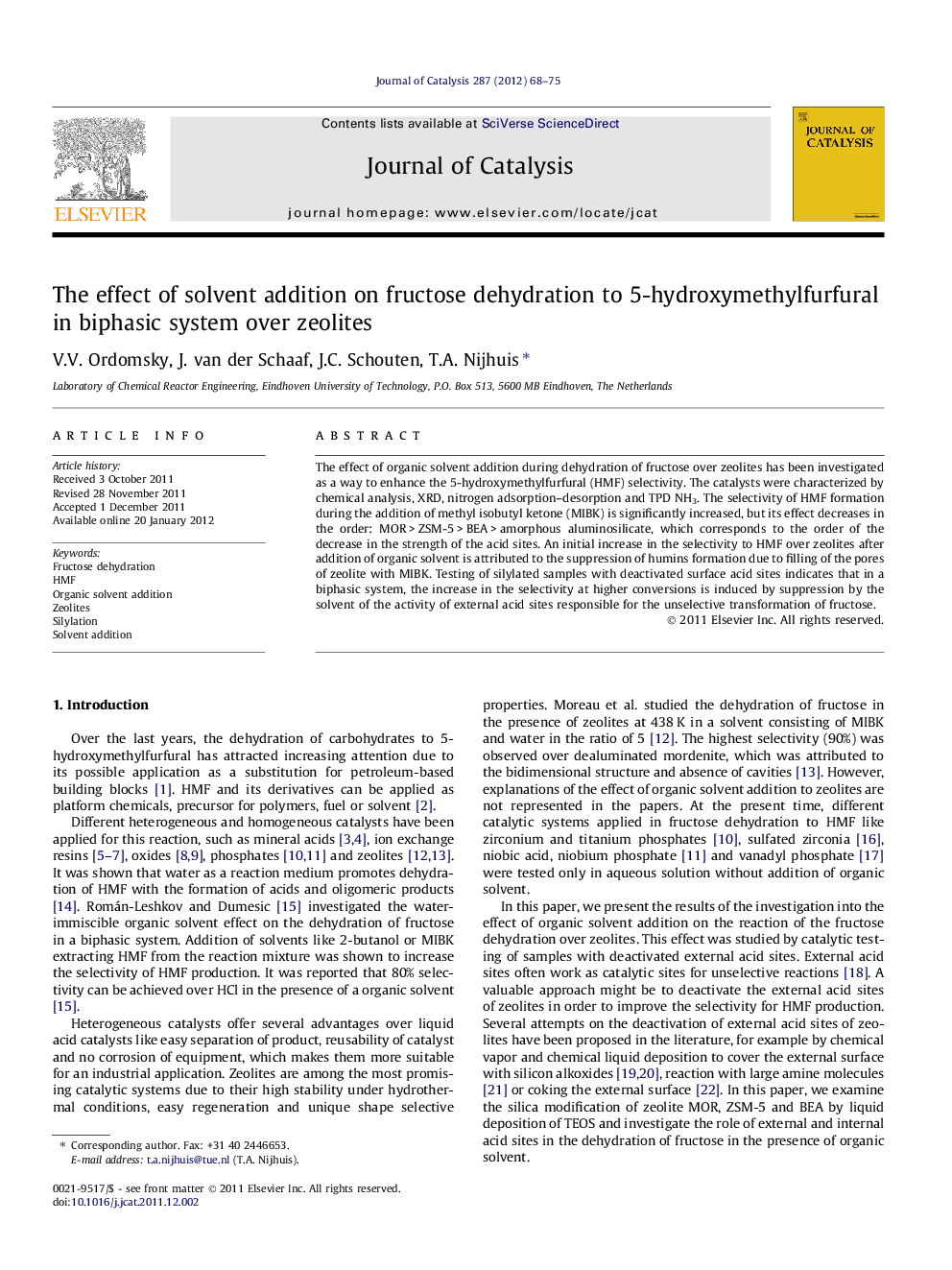| Article ID | Journal | Published Year | Pages | File Type |
|---|---|---|---|---|
| 61500 | Journal of Catalysis | 2012 | 8 Pages |
The effect of organic solvent addition during dehydration of fructose over zeolites has been investigated as a way to enhance the 5-hydroxymethylfurfural (HMF) selectivity. The catalysts were characterized by chemical analysis, XRD, nitrogen adsorption–desorption and TPD NH3. The selectivity of HMF formation during the addition of methyl isobutyl ketone (MIBK) is significantly increased, but its effect decreases in the order: MOR > ZSM-5 > BEA > amorphous aluminosilicate, which corresponds to the order of the decrease in the strength of the acid sites. An initial increase in the selectivity to HMF over zeolites after addition of organic solvent is attributed to the suppression of humins formation due to filling of the pores of zeolite with MIBK. Testing of silylated samples with deactivated surface acid sites indicates that in a biphasic system, the increase in the selectivity at higher conversions is induced by suppression by the solvent of the activity of external acid sites responsible for the unselective transformation of fructose.
Graphical abstractSolvent addition significantly improved the selectivity to HMF in the aqueous phase dehydration of fructose over zeolite catalysts. The solvent not only improves the selectivity by extraction of the HMF produced, but also changes the intrinsic activity of the catalyst.Figure optionsDownload full-size imageDownload high-quality image (72 K)Download as PowerPoint slideHighlights► Solvent addition in fructose dehydration to improve hydroxymethylfurfural selectivity. ► Zeolites MOR, ZSM-5 and BEA were used as catalysts. ► The effect is due to interaction of internal and external acid sites with solvent. ► The selectivity to HMF decreases in order MOR > ZSM-5 > BEA > amorphous aluminosilicate. ► This row corresponds to decrease in the strength of the acid sites.
